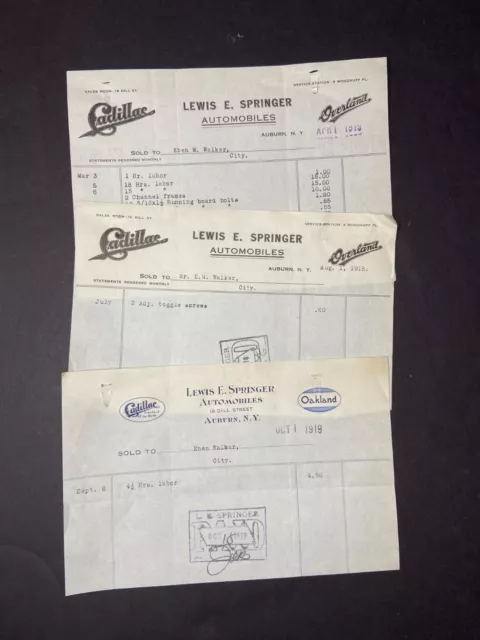RARE - EARLY Auto Garage Billheads - Cadillac Overland Oakland 1918 Auburn NY
For offer, a very nice old Advertising letterhead / bill head lot! Fresh from an old prominent estate. Never offered on the market until now. Vintage, Old, Original - NOT a Reproduction - Guaranteed !!
This came from a group of letters recently discovered in Upstate, NY that have sat untouched for over a century. From the S.C. Tallman and Walker funeral home in Auburn, NY. 3 pieces. In good to very good condition. Fold marks. NOTE: will be send folded as it was found. Please see photos and scans for all details and condition. If you collect 20th century Americana advertisement ad history, American transportation, this is a nice one for your paper or ephemera collection. Genealogy research importance as well. Combine shipping on multiple bid wins! 3115
The Cadillac Motor Car Division (/ˈkædɪlæk/) is a division of the American automobile manufacturer General Motors (GM) that designs and builds luxury vehicles. Its major markets are the United States, Canada, and China. Cadillac models are distributed in 34 additional markets worldwide. Cadillac automobiles are at the top of the luxury field within the United States.[3] In 2019, Cadillac sold 390,458 vehicles worldwide, a record for the brand.[4] Cadillac is among the first automotive brands in the world, fourth in the United States only to Autocar Company (1897) and fellow GM marques Oldsmobile (1897) and Buick (1899). It was named after Antoine de la Mothe Cadillac (1658–1730), who founded Detroit, Michigan. The Cadillac crest is based on his coat of arms. By the time General Motors purchased the company in 1909, Cadillac had already established itself as one of America's premier luxury car makers. The complete interchangeability of its precision parts had allowed it to lay the foundation for the modern mass production of automobiles. It was at the forefront of technological advances, introducing full electrical systems, the clashless manual transmission and the steel roof. The brand developed three engines, with its V8 setting the standard for the American automotive industry. Cadillac had the first U.S. car to win the Royal Automobile Club of the United Kingdom's Dewar Trophy by successfully demonstrating the interchangeability of its component parts during a reliability test in 1908; this spawned the firm's slogan "Standard of the World". It won the trophy again in 1912 for incorporating electric starting and lighting in a production automobile.[5] Early history Founding Cadillac was formed from the remnants of the Henry Ford Company. After a dispute between Henry Ford and his investors, Ford left the company along with several of his key partners in March 1902. Ford's financial backers William Murphy and Lemuel Bowen called in engineer Henry M. Leland of Leland & Faulconer Manufacturing Company to appraise the plant and equipment in preparation for liquidating the company's assets. Instead, Leland persuaded the pair to continue manufacturing automobiles using Leland's proven single-cylinder engine. A new company called the Cadillac Automobile Company was established on August 22, 1902, converting the Henry Ford Company factory at Cass Street and Amsterdam Avenue. It was named after French explorer Antoine Laumet de La Mothe, sieur de Cadillac, who had founded Detroit in 1701.[6][7] First automobiles Cadillac's first automobiles, the Runabout and Tonneau, were completed in October 1902. They were two-seat horseless carriages powered by a 10 hp (7 kW) single-cylinder engine. They were practically identical to the 1903 Ford Model A. Many sources say the first car rolled out of the factory on October 17; in the book Henry Leland—Master of Precision, the date is October 20; another reliable source shows car number three to have been built on October 16. Cadillac displayed the new vehicles at the New York Auto Show in January 1903, where the vehicles impressed the crowds enough to gather over 2,000 firm orders. Cadillac's biggest selling point was precision manufacturing, and therefore, reliability; a Cadillac was simply a better-made vehicle than its competitors. Notable events: 1906–1912 The Cadillac Automobile Company merged with Leland & Faulconer Manufacturing, forming The Cadillac Motor Company in 1905.[8] From its earliest years, Cadillac aimed for precision engineering and stylish luxury finishes, causing its cars to be ranked amongst the finest in the United States. Cadillac was the first volume manufacturer of a fully enclosed car, in 1906. Cadillac participated in the 1908 interchangeability test in the United Kingdom, and was awarded the Dewar Trophy for the most important advancement of the year in the automobile industry. On July 29, 1909,[1] Cadillac was purchased by the General Motors (GM) conglomerate.[9] Cadillac became General Motors' prestige division, devoted to the production of large luxury vehicles. The Cadillac line was also GM's default marque for "commercial chassis" institutional vehicles, such as limousines, ambulances, hearses and funeral home flower cars, the last three of which were custom-built by aftermarket manufacturers. It became positioned at the top of GM's vehicle hierarchy, above Buick, Oldsmobile, Oakland, and later, Chevrolet. In 1912, Cadillac was the first automobile manufacturer to incorporate an electrical system enabling starting, ignition, and lighting.[10][11] Becoming the "Standard of the World" and the Great Depression: 1915–1941 1921 Cadillac logo In 1915, Cadillac introduced a 90-degree flathead V8 engine with 70 horsepower (52 kW) at 2400 rpm and 180 pound force-feet (240 N⋅m) of torque, allowing its cars to attain 65 miles per hour (105 km/h).[11] This was faster than most roads could accommodate at this time. Cadillac pioneered the dual-plane V8 crankshaft in 1918. In 1928 Cadillac introduced the first clashless Synchro-Mesh manual transmission, utilizing constant mesh gears. In 1930 Cadillac implemented the first V-16 engine, with a 45-degree overhead valve, 452 cubic inches (7.41 litres), and 165 horsepower (123 kW), one of the most powerful and quietest engines in the United States. The development and introduction of the V8, V16 and V12 helped to make Cadillac the "Standard of the World".[11] A later model of the V8 engine, with overhead valves, set the standard for the entire American automotive industry in 1949.[11] In July 1917, the United States Army needed a dependable staff car and chose the Cadillac Type 55 Touring Model after exhaustive tests on the Mexican border. 2,350 of the cars were supplied for use in France by officers of the American Expeditionary Force in World War I.[12] A 1921 Cadillac advertisement General Motors of Canada had built Cadillacs from 1923 until 1936 and LaSalles from 1927 until 1935.[13] Pre-World War II Cadillacs were well-built, powerful, mass-produced luxury cars aimed at an upper-class market. In the 1930s, Cadillac added cars with V12 and V16 engines to their range, many of which were fitted with custom coach-built bodies.[14] In the 1920s and 1930s Cadillac and Buick vehicles were popular with longer-distance passenger service operators e.g. the Nairn Transport Company in the Middle East (Baghdad-Damascus) and Newmans Coach Lines in New Zealand. In 1926, Cadillac recruited automobile stylist Harley Earl in a one-time consulting capacity, but his employment lasted considerably longer: by 1928, Earl was the head of the new Art and Color division and he would ultimately work for GM until he retired, over 30 years later. The first car he designed was the LaSalle, a new, smaller "companion marque" car, named after another French explorer and founder of Detroit, René Robert Cavelier, Sieur de La Salle. That marque remained in production until 1940.[15] Cadillac introduced designer-styled bodywork (as opposed to auto-engineered) in 1927. It installed shatter-resistant glass in 1926. Cadillac also introduced the "turret top", the first all-steel roof on a passenger car.[11] Previously, car roofs had been made out of fabric-covered wood. The Great Depression sapped the auto industry generally, with the luxury market declining more steeply; between 1928 and 1933, Cadillac sales declined by 84% to 6,736 vehicles.[16] Exacerbating sales performance for the Cadillac brand was a policy, reflective of the times, which discouraged sales to African Americans.[17] Nick Dreystadt, mechanic and national head of Cadillac service, urged a committee—set up to decide whether the Cadillac brand would live on—to revoke that policy. After the policy was eliminated, brand sales increased by 70% in 1934, and Dreystadt was promoted to lead the entire Cadillac Division.[17] By 1940, Cadillac sales had risen tenfold compared to 1934.[14] In 1936, Dreystadt released the Series 60 as Cadillac's entry into the mid-priced vehicle market. It was replaced by the Series 61 in 1939, but a popular model that was derived from it, the Sixty Special, continued through 1993. Another factor helped boost Cadillac growth over the next few years: a revolution in assembly-line technology. In 1934, Henry F. Phillips introduced the Phillips screw and screwdriver to the market. He entered into talks with General Motors and convinced the Cadillac group his new screws would speed assembly times and therefore increase profits. Cadillac was the first automaker to use the Phillips technology, in 1937, which was widely adopted in 1940.[18] For the first time in many years all cars built by the company shared the same basic engine and drivetrain in 1941.[19] 1941 also saw the introduction of optional Hydra-Matic, the first mass-produced fully automatic transmission, offered the previous year on the Oldsmobile. After World War II and the Great Depression: 1945–1959 Fltr (above): Cadillac motor car logo, c.1950s, being the coat of arms of Antoine Laumet de La Mothe, sieur de Cadillac; 1948 Cadillac; (below): two images of the iconic large tail fins of the 1959 Cadillac Postwar Cadillac vehicles innovated many of the styling features that came to be synonymous with the late 1940s and 1950s American automobile. Incorporating many of the ideas of then General Motors styling chief Harley J. Earl, these included tailfins, wraparound windshields, and extensive use of chrome. Tailfins were first added in 1948[11] and reached their pinnacle in 1959. From 1960 to 1964 they decreased each year until they disappeared in the 1965 model year (remaining vestigialy only on the limited production 1965 Series 75 chassis, a carry-over from 1964). Cadillac's other distinctive styling attribute was its front-bumper. What had started out after the war as a pair of artillery shell-shaped bumper guards[20] moved higher on the front-end design as the 1950s wore on. Becoming known as Dagmar bumpers for their similarity to the buxom 1950s television personality, they were toned down in 1958 and gone the next year. 1956 saw the introduction of the pillarless four-door hardtop sedan, marketed as the "Sedan de Ville"; a year later the feature appeared in all standard Cadillacs. The fledgling automotive magazine Motor Trend awarded its first "Motor Trend Car of the Year" to Cadillac in 1949 for its innovative overhead valve V8 engine. While the company initially snubbed the honor, it now proudly references its "Car of the Year" wins in publicity material.[21][22] On November 25, 1949, Cadillac produced its one-millionth car, a 1950 Coupe de Ville.[23] It also set a new sales mark of 100,000 cars,[23] matched in 1950 and 1951.[24] 1949 also saw the introduction with Buick of the first mass-produced hardtop coupe, a closed-body style without a "B" pillar. Marketed as the Coupe de Ville, it would become one of Cadillac's most popular models for many years. In 1951, Cadillac began production of the M41 Walker Bulldog army tank, which saw service in the Korean and Vietnam wars. In 1953, the "Autronic Eye" was introduced. This feature would automatically dim high-beam headlamps for the safety of oncoming motorists.[25] In 1957, Cadillac attempted to move further upmarket, creating the hand-built Series 70 Eldorado Brougham.[26] It featured self-levelling suspension, "memory seat" function, and an all-transistor signal-seeking car radio that was produced by GM's Delco Radio and which was available as standard equipment for the 1957 Eldorado Brougham models.[20][27][28][29] While the car showed Cadillac's technological prowess, it sold only 904 units. Pinnacles in luxury and dimension: 1960–1976 Cadillac Eldorado Brougham all-transistor car radio (1957 dashboard) Installing a transmission on a Cadillac in Detroit, Michigan, 1973 The dual-reservoir brake master cylinder, with separate front and rear hydraulic systems, was introduced in 1962, six years ahead of the federal requirement. The first fully automatic heater–air conditioning system also appeared, as did the three-speed Turbo-Hydramatic automatic transmission; it would become the GM standard model for several decades. Starting in the late 1960s, Cadillac offered a fiber-optic warning system[citation needed] to alert the driver to failed light bulbs. The use of extensive bright-work on the exterior and interior also decreased each year after 1959. By the 1966 model year, even the rear bumpers ceased to be all chrome—large portions were painted, including the headlight bezels. In 1966, Cadillac had its best annual sales to that point, over 192,000 units (142,190 of them de Villes),[30] an increase of more than 60%.[31] This was exceeded in 1968, when Cadillac topped 200,000 units for the first time.[32] The years 1967 and 1968 saw the introduction of a host of federally mandated safety features, including energy-absorbing steering columns and wheels, soft interior and instrument panel knobs and surfaces, front shoulder belts, and side marker lights. The front-wheel drive Eldorado was launched in 1967, setting a new standard for a personal luxury car. Its simple, elegant design was a far cry from the tailfin and chrome of the 1950s. Cadillac's success grew against rivals Lincoln and Imperial, which had division sales topping all of Chrysler for the first time in 1970.[33] The new 472 cu in (7.7 L) engine that debuted in the 1968 model year, designed for an ultimate capacity potential of 600 cu in (9.8 L),[34] was increased to 500 cu in (8.2 L) for the 1970 Eldorado. It was adopted across the model range beginning in 1975. Driver and front passenger airbags ("Air Cushion Restraint System") began to be offered on some Cadillac, as well as other Buick and Oldsmobile luxury models, in 1974, however this option was unpopular as was discontinued after the 1976 model year. The pillarless Coupe deVille ended with the 1973 model, while the Sedan deVille remained pillarless through 1976. The 1970s saw new extremes in vehicle luxury and dimension. The 1972 Fleetwood was some 1.7 in (43 mm) longer in wheelbase and 4 in (100 mm) overall, compared to the 1960 Series 75 Fleetwood; the entry-level 1972 Calais was 2.4 in (61.0 mm) longer than the equivalent 1960 Series 62, on the same wheelbase.[35] Models gained a smoother ride while vehicle weight, standard equipment, and engine displacement were all increased. Cadillac experienced record sales in 1973 and again in the late 1970s. In May 1975, the Seville was introduced as a competitor to the growing import luxury car market and was marketed as "international size".
- Condition: Used
- Condition: Good to very good condition. See description
- Year: 1918
- Country/Region of Manufacture: United States
- Modified Item: No
PicClick Insights - RARE - EARLY Auto Garage Billheads - Cadillac Overland Oakland 1918 Auburn NY PicClick Exclusive
- Popularity - 1 watcher, 0.1 new watchers per day, 17 days for sale on eBay. Normal amount watching. 0 sold, 1 available.
- Best Price -
- Seller - 8,802+ items sold. 0% negative feedback. Great seller with very good positive feedback and over 50 ratings.
People Also Loved PicClick Exclusive
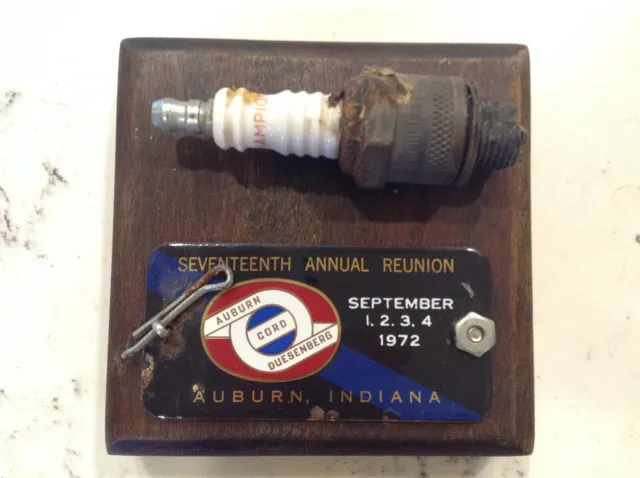
Vtg 17th Annual Reunion 1972 Auburn Cord Duesenberg Plaque
£18.32 Buy It Now 22d 10h
1917 Hudson Speedster - Auburn NY RARE - Automobile Car Billhead Receipt
£81.97 Buy It Now 29d 8h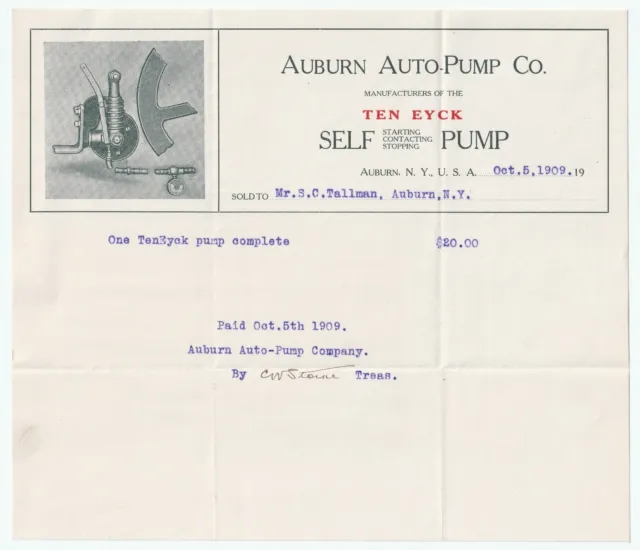
RARE Billhead - Auburn Auto-Pump Company Ten Eyck - Auburn NY 1909 - w Graphic
£81.97 Buy It Now 13d 7h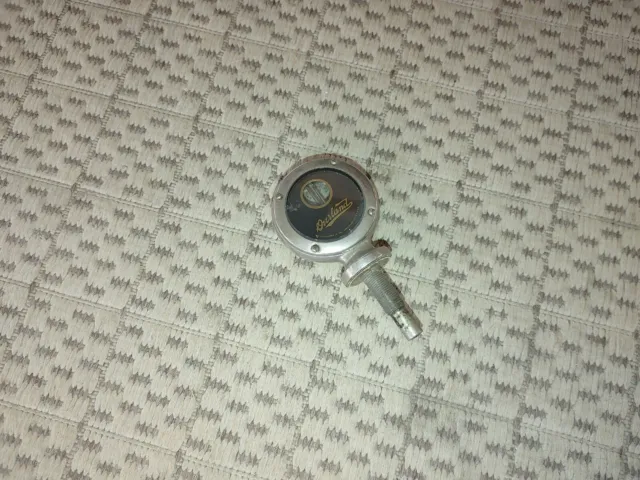
Vintage Early 1913 1918 Overland Moto-Meter Motometer Radiator Cap Thermometer
£139.85 Buy It Now 17d 9h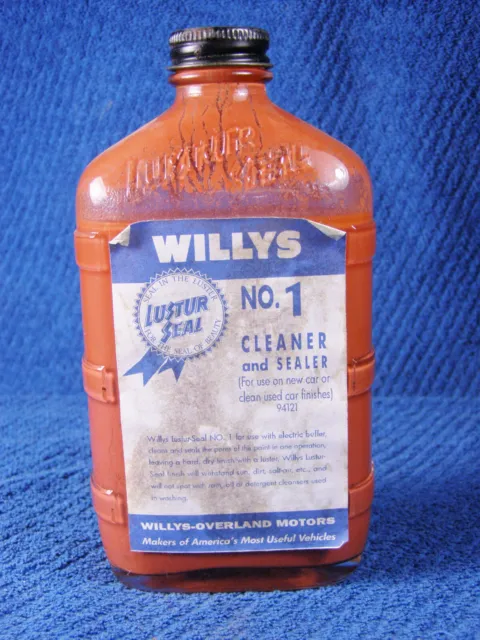
Vintage WILLYS-OVERLAND MOTORS Lustur Seal No.1 Cleaner ans Sealer Bottle
£9.65 Buy It Now 7d 20h
